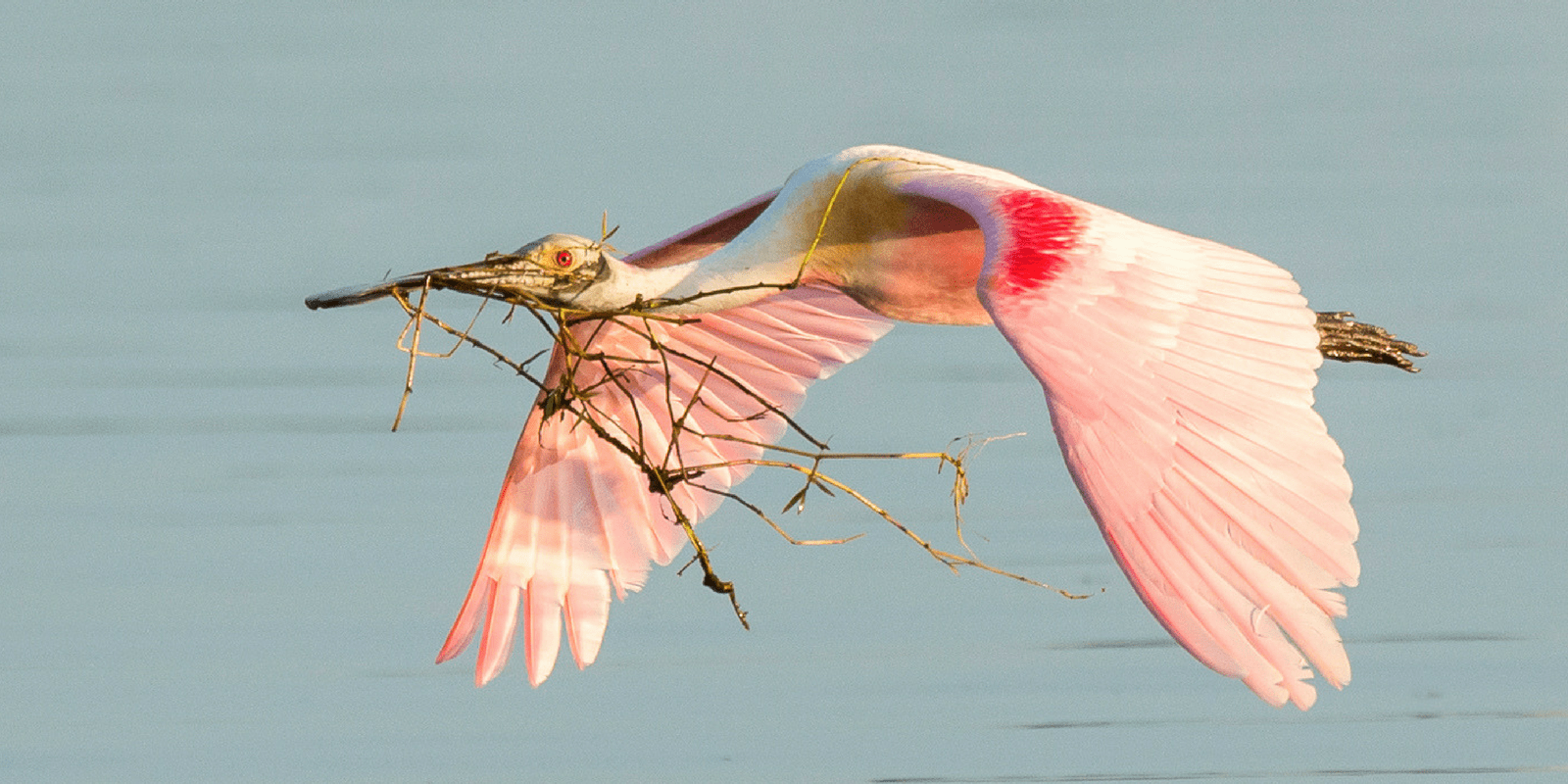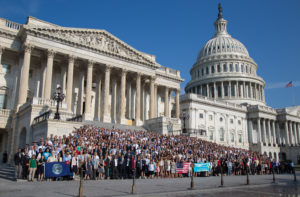We have much more to do and your continued support is needed now more than ever.
Helping Wildlife With a Carbon Price

The images from 2017’s intense hurricane season are unforgettable, and what they show is devastating: Loss of life. Destruction of property. Many of us were deeply moved as we watched heroes rescue not only people and pets, but also injured and displaced wildlife. During Hurricane Harvey in Texas, a colony of bats living under a bridge was saved from rapidly rising water. During Hurricane Irma in Florida, a baby and adult dolphin that washed ashore were returned to sea and able to swim away. And in many areas, baby squirrels were blown out of their nests and placed in the care of wildlife rehabilitators.
Several heartwarming wildlife rescues “went viral” during the catastrophic hurricanes. But every day, away from cameras, wildlife silently struggle to adapt to the pervasive and escalating effects of climate change. From the loss of habitat and food sources to the introduction of invasive species and disease and much more, climate change is an extreme threat to wildlife.
Carbon Pricing: A Piece of the Climate Solution Puzzle
Fossil fuels like oil, gas and coal contain carbon. When these fuels are burned, they release carbon dioxide, which traps heat in the Earth’s atmosphere. We, the public, are already paying for the damaging effects of that carbon pollution. For example, unhealthy air increases respiratory and cardiovascular disease and drives up medical costs. Droughts cause crop losses. Rising seas and coastal flooding cause property damage. If we want to slow or even reverse climate change, we have to reduce those emissions in our atmosphere.
One solution to climate change, which has support on both sides of the political aisle, is carbon pricing.

Carbon can be priced with a straightforward fee that emitters pay per ton of carbon released, or a cap-and-trade style program that limits overall pollution levels and allows trading of a decreasing number of greenhouse gas permits over time. Groups like the nonpartisan Citizens’ Climate Lobby argue for a straightforward carbon price as an efficient and business-friendly means to cut pollution swiftly.
Legislating the price of carbon would shift the true costs of carbon pollution to the industries that burn fossil fuels and emit carbon pollution. This provides an economic incentive to use cleaner energy, which helps reduce emissions and stabilize our climate. Economists agree carbon pricing is a low-cost, effective way for society to reduce carbon emissions. Approximately 40 countries, cities, states and provinces around the world already implement some form of carbon pricing.
Returning the Revenue to Americans
Groups like CCL and the conservative Climate Leadership Council (CLC) advocate not just for a carbon price, but also for carbon dividends. As the CLC explains in “The Conservative Case for Carbon Dividends,” the revenue from a carbon price could be returned equally to the American people in the form of a monthly check or direct deposit. If a carbon price started at $40 per ton, a family of four would receive around $2,000 in dividend payments in just the first year.
A similar plan is the Carbon Fee and Dividend proposal supported by Citizens’ Climate Lobby, which suggests starting the price at $15 per ton and returning all of the net revenue to households as a monthly dividend check.
Big-Time Benefits for People, Environment and Wildlife
The economists at Regional Economic Models, Inc. (REMI) evaluated a carbon fee and dividend style plan, and their study showed that a carbon fee and dividend plan could add approximately 2.1 million jobs after 10 years, and 2.8 million after 20 years.
Another benefit is humans’ respiratory and cardiovascular health. The transition to clean energy would clean our air of smog, ozone, fine particulate matter and other pollutants caused by burning fossil fuels. Over 20 years, approximately 230,000 premature deaths will be prevented.
The shift to cleaner energy means our air, land, oceans and waterways contain less pollutants and toxins. Wildlife populations can enjoy more of the habitats and food sources they rely on, and the ongoing decline of wildlife in the U.S. can be halted and reversed. With healthier ecosystems and food chains, wildlife populations won’t just survive—they’ll thrive. Carbon pricing doesn’t restrict polluters to specific methods or technologies to reduce carbon emissions. Businesses have the flexibility to innovate in ways that are best for them, and citizens have an economic incentive to make cleaner energy choices.
Of course, all of those benefits are just icing on the cake. The most fundamental benefit of a carbon tax or fee is huge emissions reductions that will go a long way toward stabilizing our climate. The REMI study indicates that in just 20 years, a carbon fee and dividend style plan could reduce carbon emissions to 50% of 1990 levels.
We don’t have to wait for the next severe weather event to rescue wildlife. We can all be wildlife heroes today by taking decisive action and asking our representatives to enact carbon pricing policies. We can choose to leave behind a legacy of positive environmental change and innovation. And we can leave our children thriving wildlife, beautiful lands and rich natural resources they deserve.
About the Author: Pam Shaouy is volunteer with Citizens’ Climate Lobby (CCL). CCL is a non-profit, non-partisan, grassroots advocacy organization focused on national policies to address climate change.




















